It’s been a while since we’ve looked at an E-ATX case with both SSI-EEB and SSI-CEB motherboard form factor support. But today on our test bench we have a mid-tower case from Montech that advertises support for these bigger boards – and at an enticing starting price of just $75 USD – the Air 903 Max. As its name implies, this case is designed for users who prioritize maximum airflow and the lowest temperatures possible. Its $75 starting price is for the black version of this case, with a white model selling for $4 more.
We recently tested Montech’s budget Hyperflow ARGB AIOs and found them to be among the best on the market, so my expectations for Montech’s Air 903 Max are high. Will it make our list of best PC cases? Let’s take a look at the specifications of the PC case straight from Montech, then we’ll go over the features and any build concerns, then we’ll wrap up our review with thermal and acoustic benchmarks.
Cooler specifications
| Motherboard Support | EATX, ATX, Micro-ATX, Mini-ATX |
| Color | Black or White |
| Type | E-ATX Mid-Tower |
| Case Dimensions | 478mm (L) x 493mm (H) x 230mm (W) (18.82 x 19.41 x 9.06 inches) |
| 2.5-inch Drive Support | Up to 5 |
| 3.5-inch Drive Support | Up to 2 |
| PCI-E Expansion Slots | 7 |
| CPU Cooler Clearance | 180mm (7.09 inches) |
| GPU Clearance | 400mm (15.75 inches) |
| PSU Length | 240mm (9.45 inches) |
| Radiator Support | Up to 360mm |
| Price (Black/White) | $75 USD/$79 USD for Air 903 Max |
| Row 12 – Cell 0 | $65 USD/$69 USD for Air 903 |
Features of the Montech Air 903 Max Case
*️⃣ Build Quality
The case is built mostly of steel parts. The quality of the construction is solid, with no apparent weak points. There is a small amount of plastic used for the feet of the unit and front cover.
*️⃣ Side view
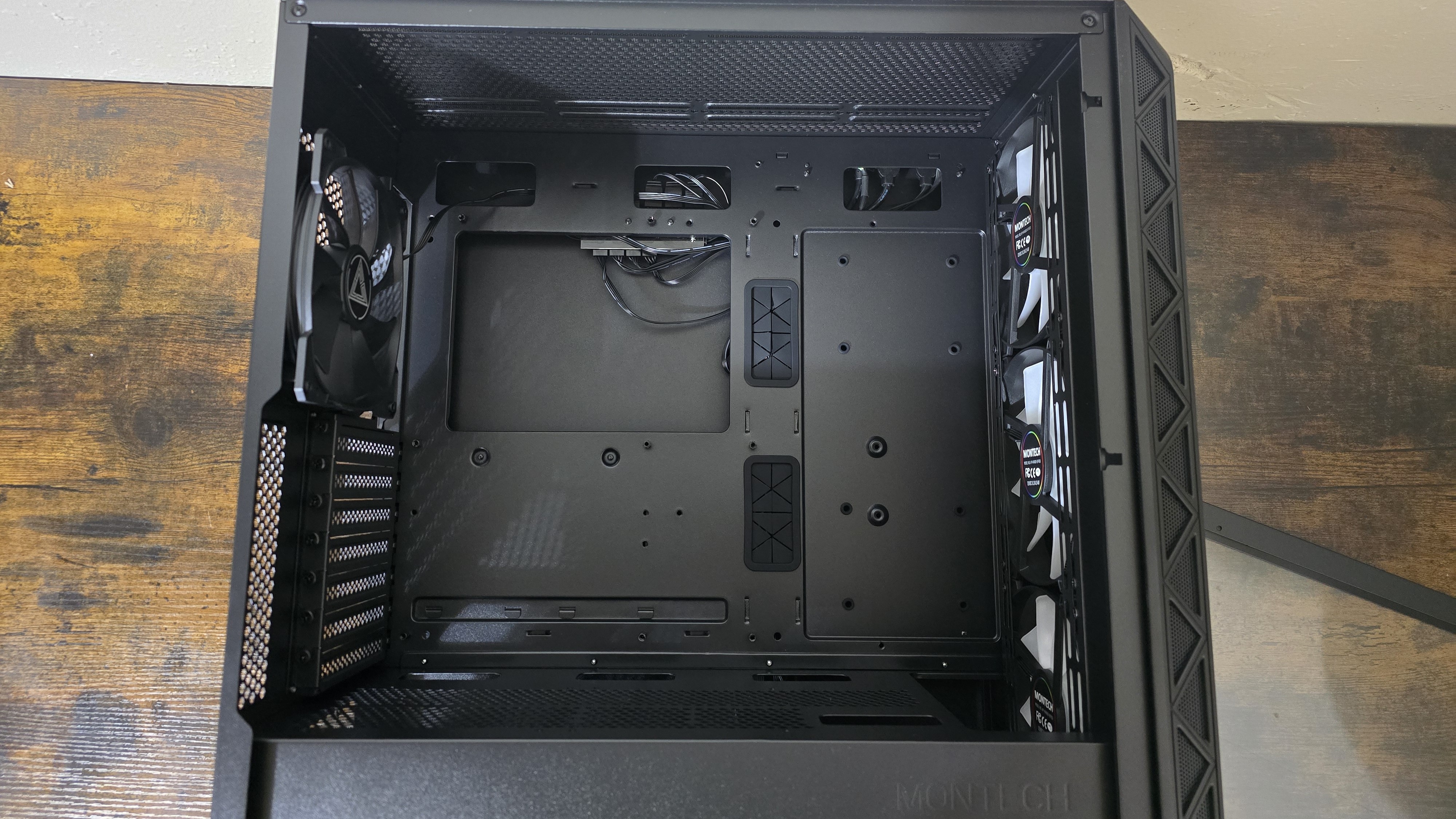
Looking at the inside of the Air 903 Max, the design is fairly standard. The three 140mm intake fans are at the front of the case, with the PSU shroud at the bottom. The top can be support up to a 360mm radiator, and there are seven PCI-e expansion slots.
Between the fans and the cable routing, there are mounts to support two 2.5-inch drives – which brings us storage support.
*️⃣ Storage support
Montech’s Air 903 Max supports up to five 2.5-inch drives and up to two 3.5-inch drives, in three separate areas: 2x 2.5-inch drives next to the motherboard, 2x 2.5-inchers behind the motherboard, and 1x 2.5 and 2x 3.5-inch drives at the bottom of the case in the drive bay. I’ve highlighted these locations with blue lines in the picture below.
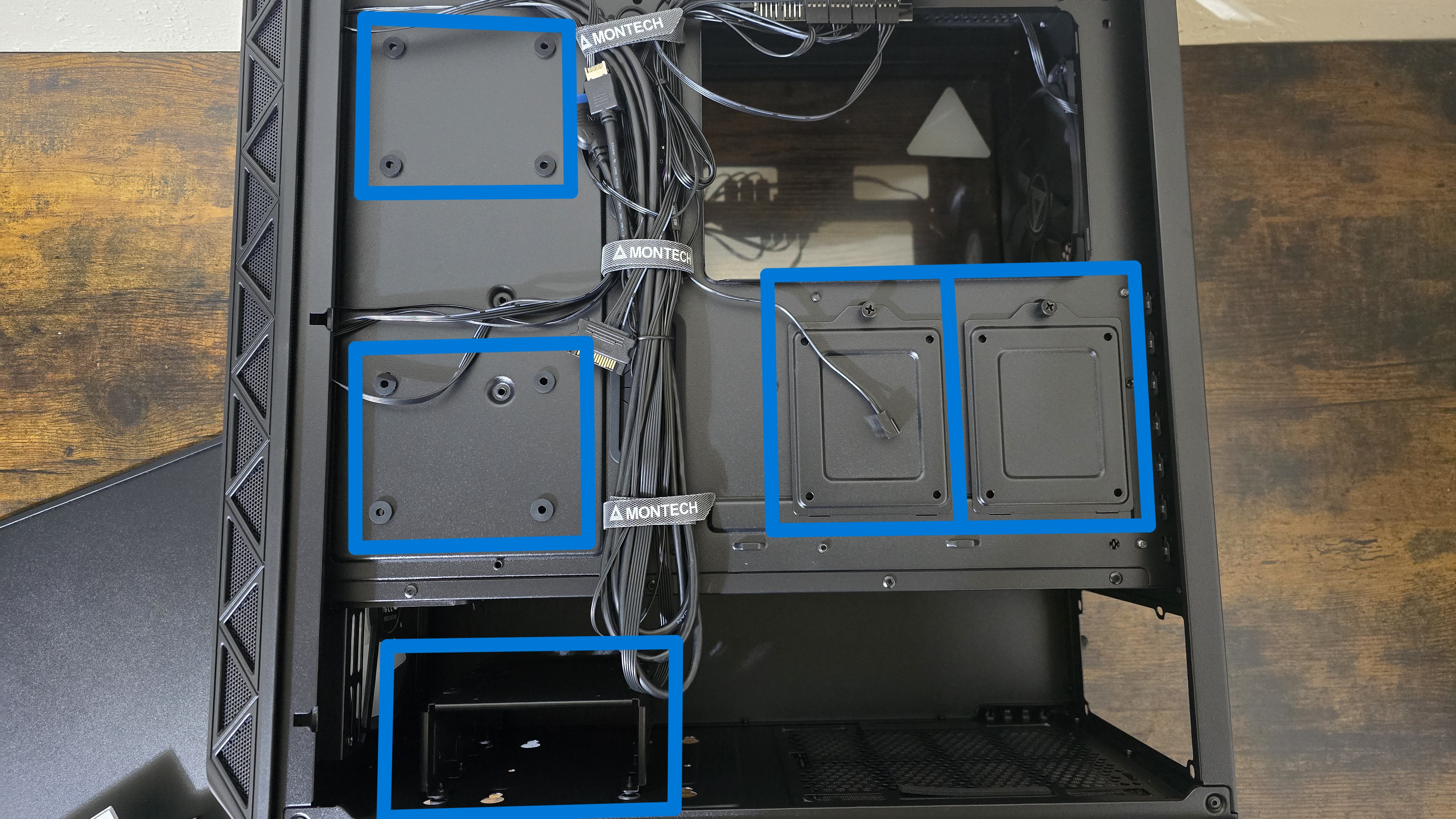
*️⃣ Radiator and fan support
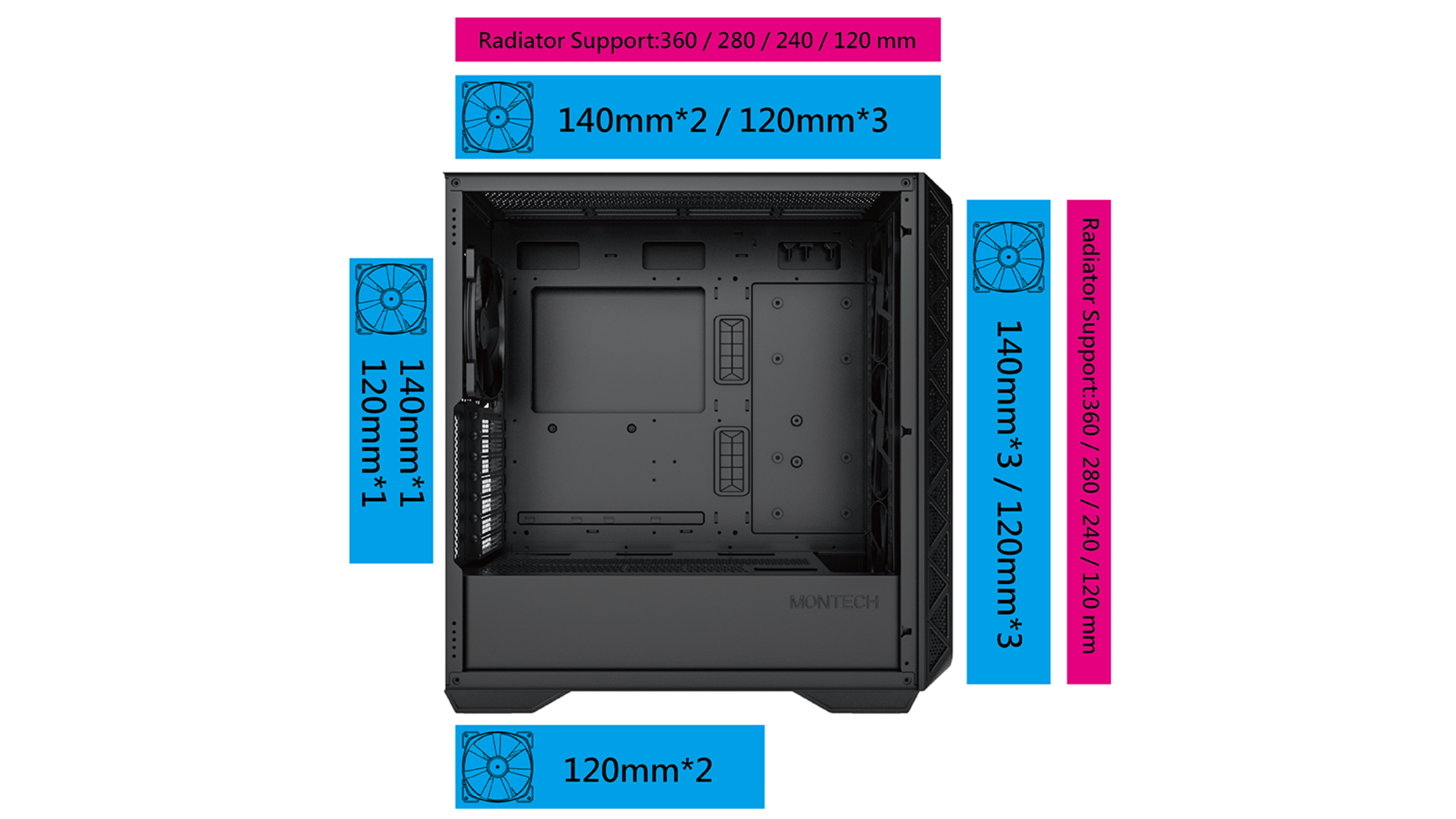
In the top and front of the 903 Max, you can fit up to a 360mm AIO, or three 140mm fans. The front cover of the unit has a porous metal grille. A dust filter above the radiator support bracket helps to protect from dust.
The back supports a 140mm fan, included with the unit. Finally, next to the PSU you can fit up to two 120mm fans.
*️⃣ Hardware ARGB and PWM fan hub
Pre-installed on the backside of the case is a hardware ARGB and PWM hub, supporting up to six connections of both types. This can be very useful for folks who want to add extra fans to their system.This hub also supports on-the-fly adjustment of ARGB lighting settings, controlled via the front IO panel. Out of the box, this will work with the three included front ARGB fans.
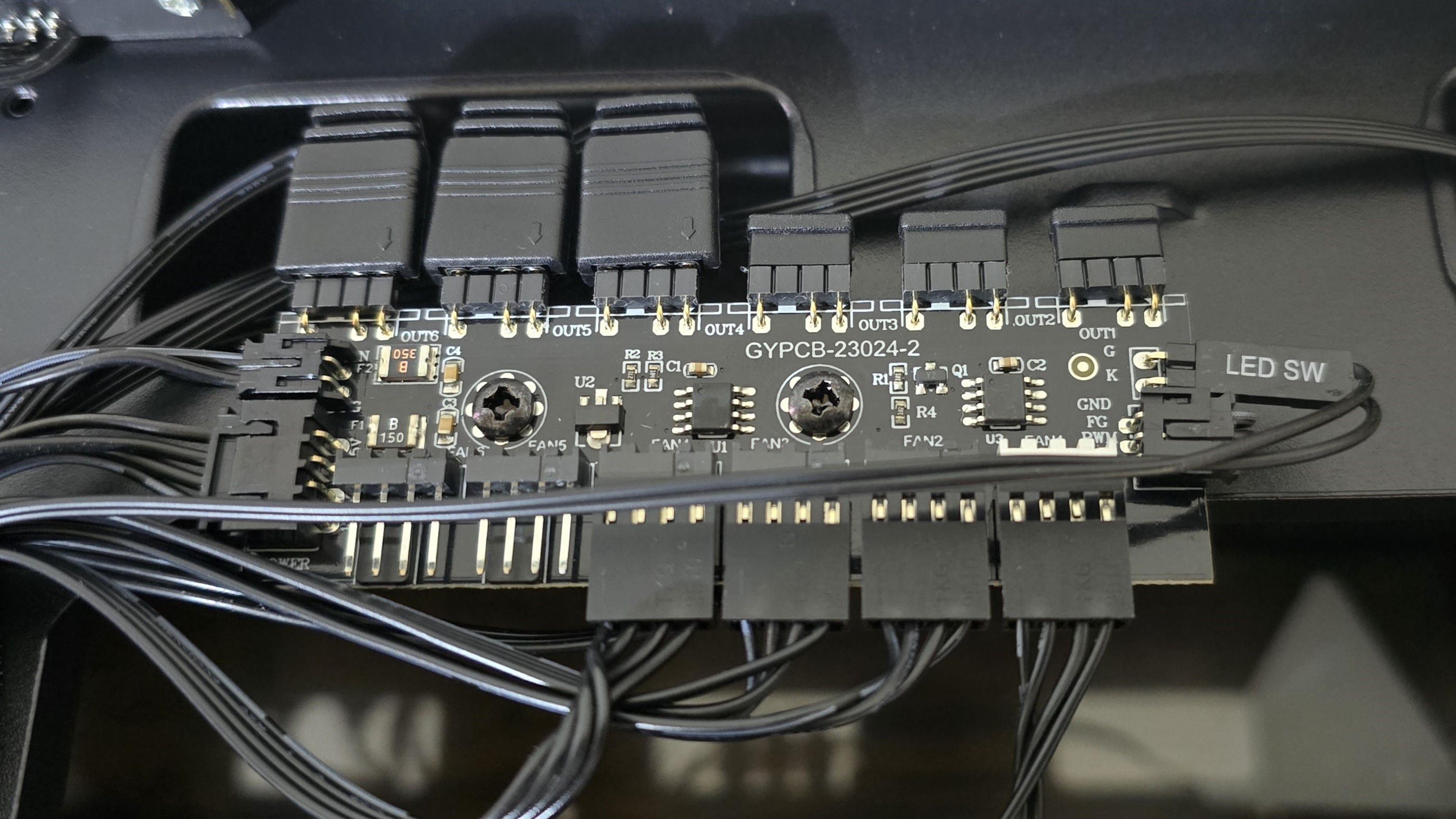
*️⃣ IO Panel
The IO Panel at the top is populated by two USB-A ports, one USB-C, and separate audio and microphone jacks. Power and reset buttons are here as well, alongside a button to adjust ARGB lighting settings on the fly.
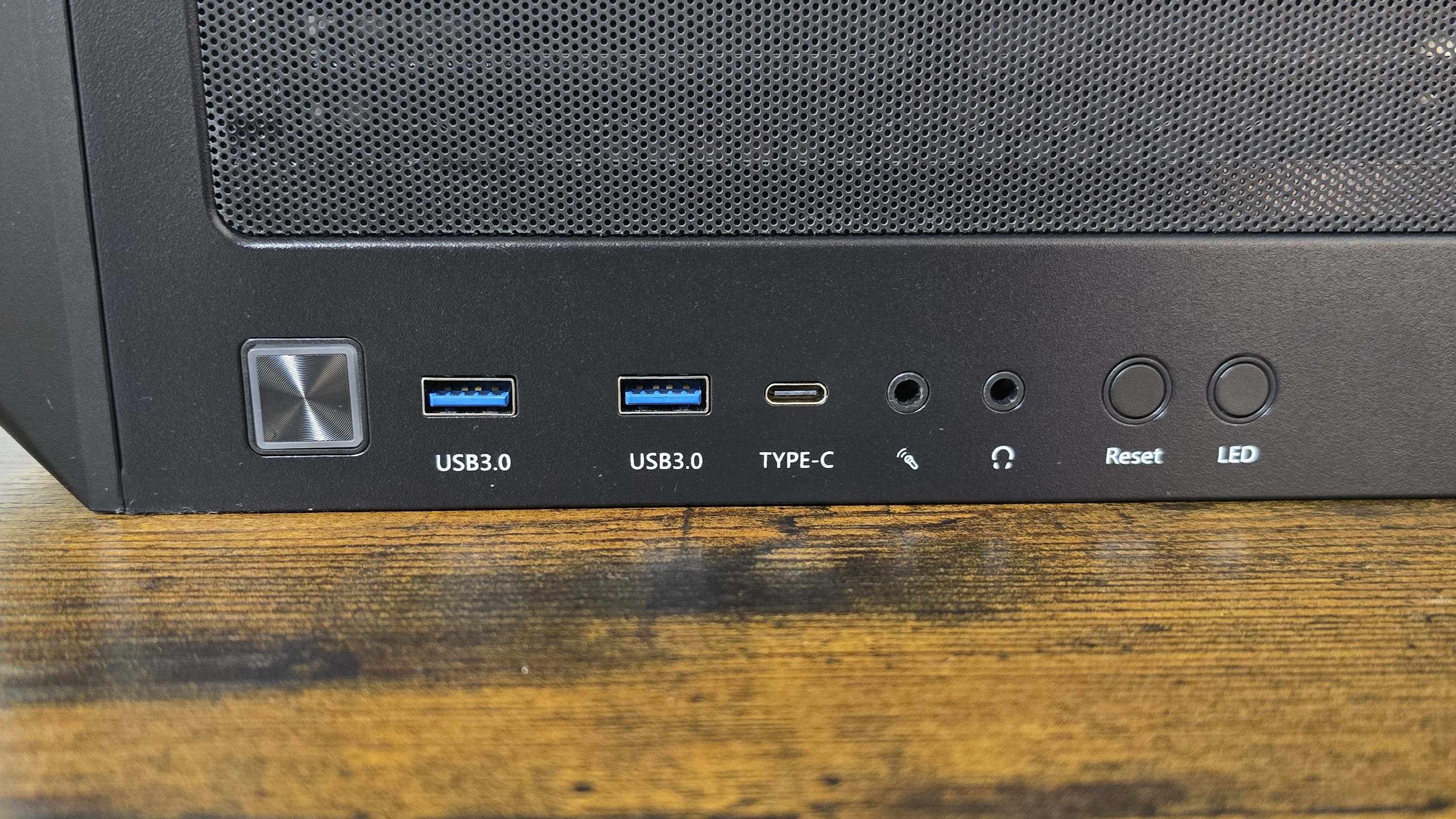
*️⃣ Front view
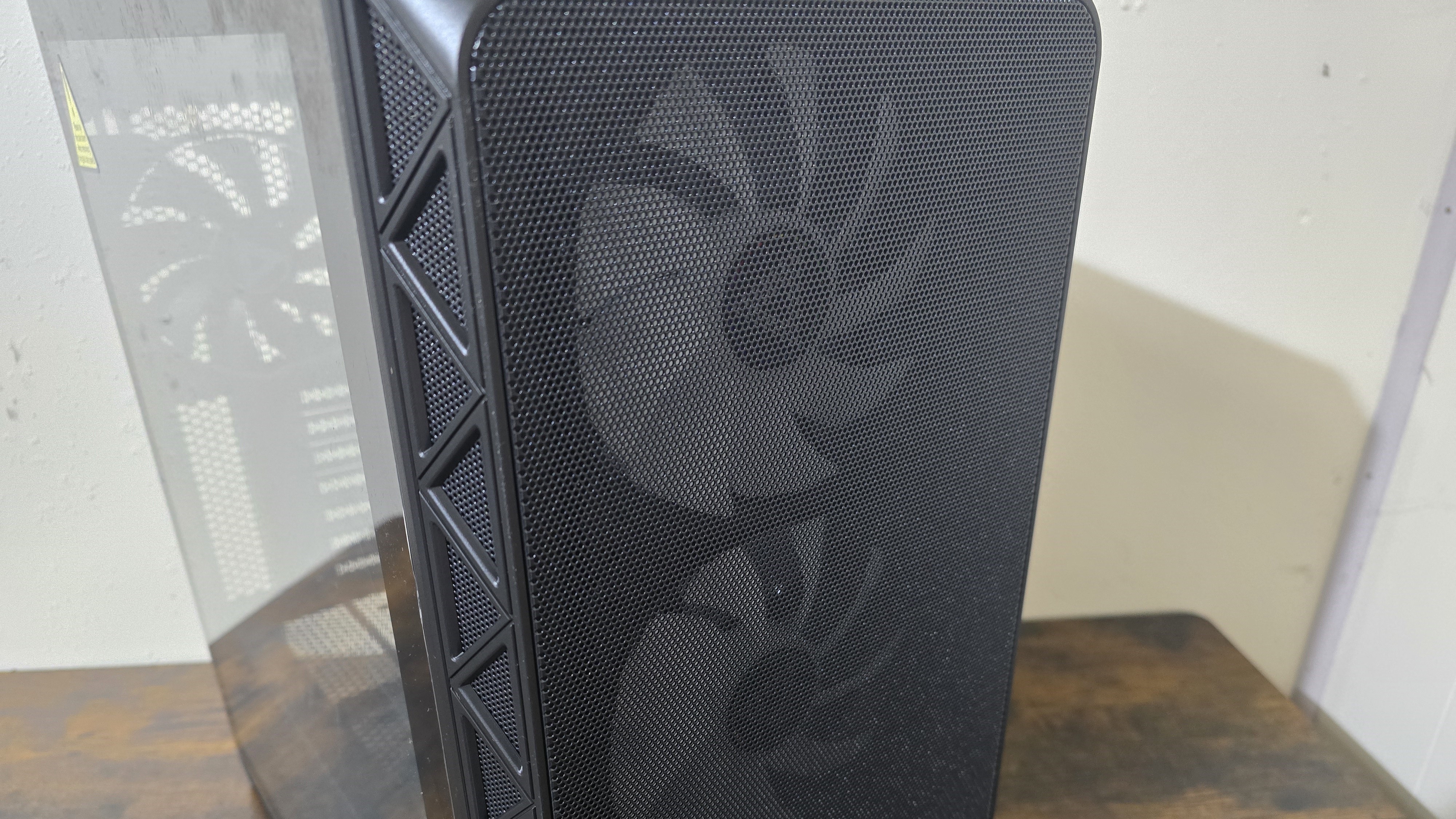
The front cover of the Montech Air 903 Max has a mesh filter, which Montech advertises as having 51% porosity. There’s also a 2cm gap on the side protected by the same mesh filter material to allow maximum intake.
*️⃣ Rear view
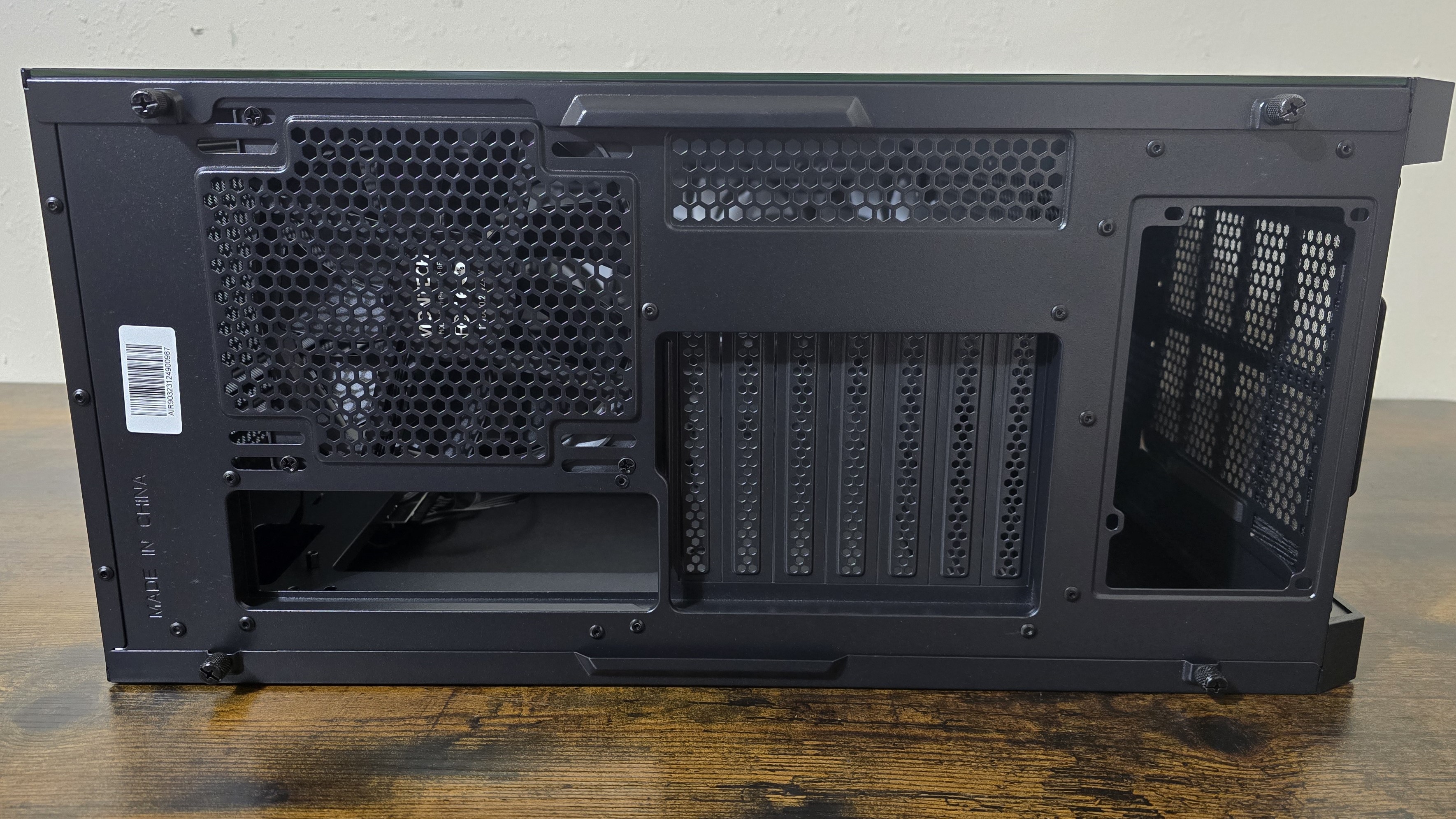
The rear-side is fairly standard. From the top, we have an air exhaust showing the pre-installed 140mm fan behind it. Going down, we have the exhaust fan followed by seven PCI-e expansion slots, and at the bottom is space for a power supply as well as a dust filter for the PSU intake.
*️⃣ Back side view and cable management features
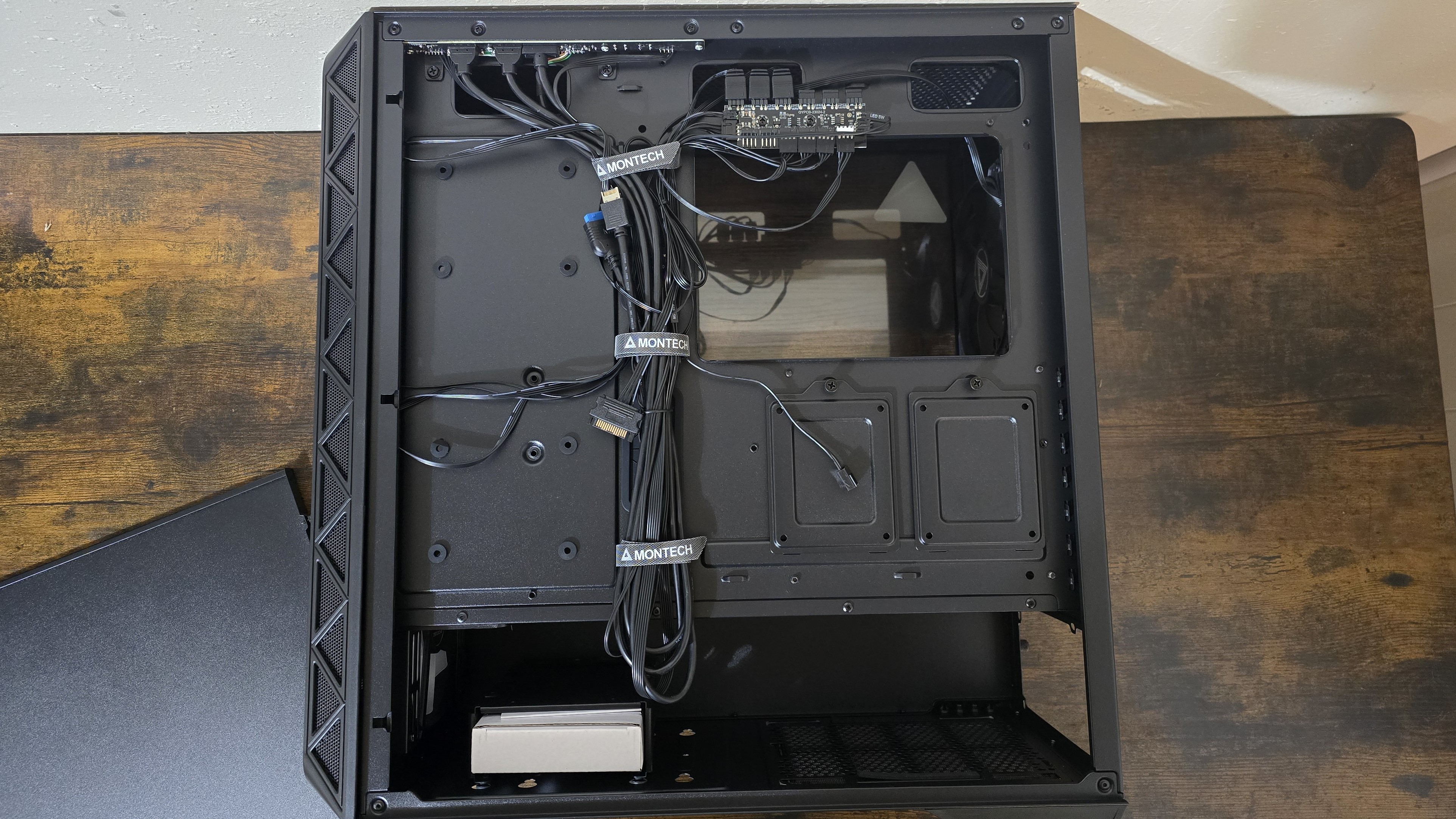
The back of the unit includes basic cable management support, with three Velcro strap points. At the top, you’ll notice the hardware ARGB and PWM hub mentioned earlier. The accessories box is packed inside the drive bay. It includes cable ties, screws, and extra motherboard standoffs for E-ATX motherboards.
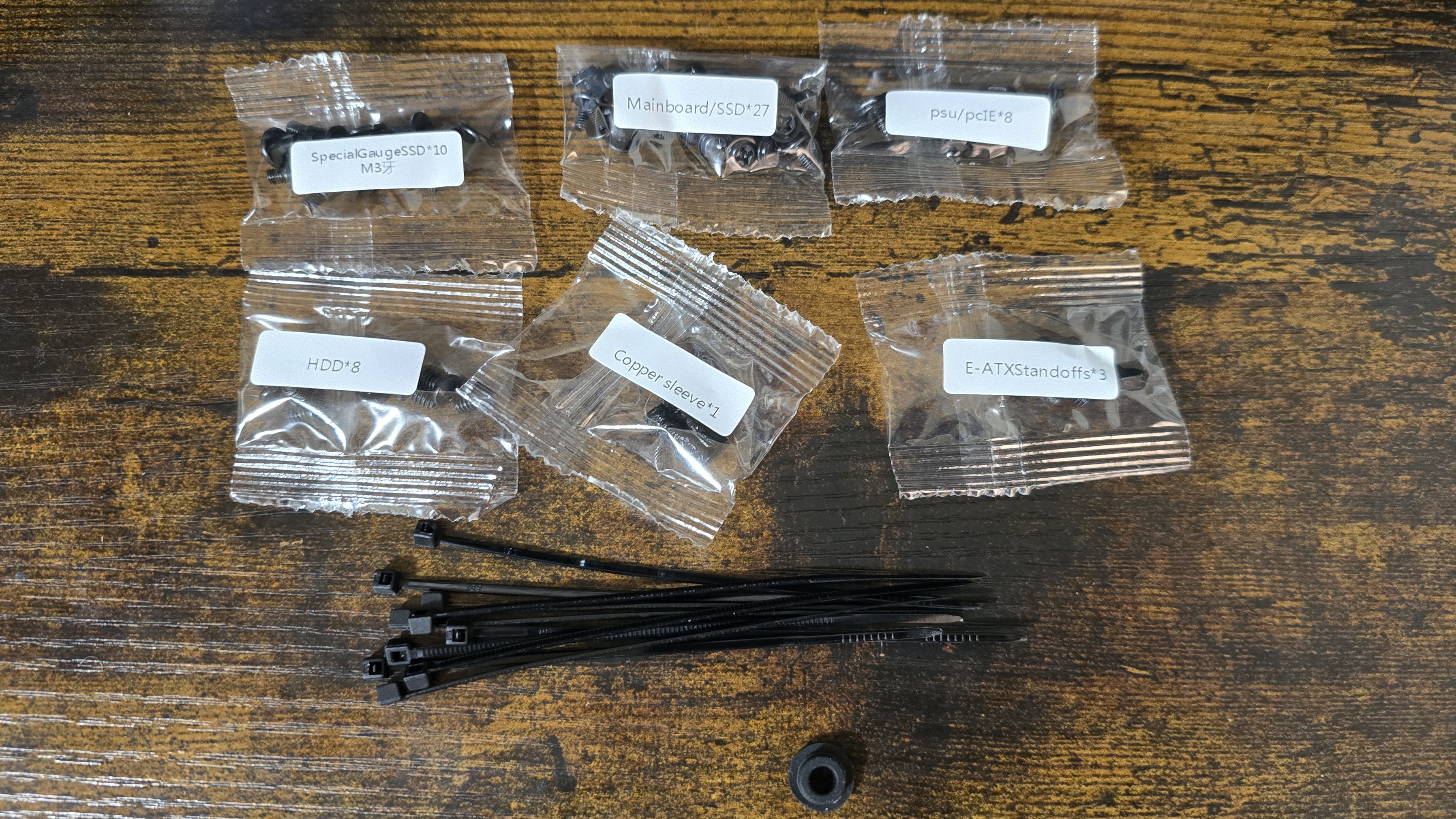
*️⃣ Bottom
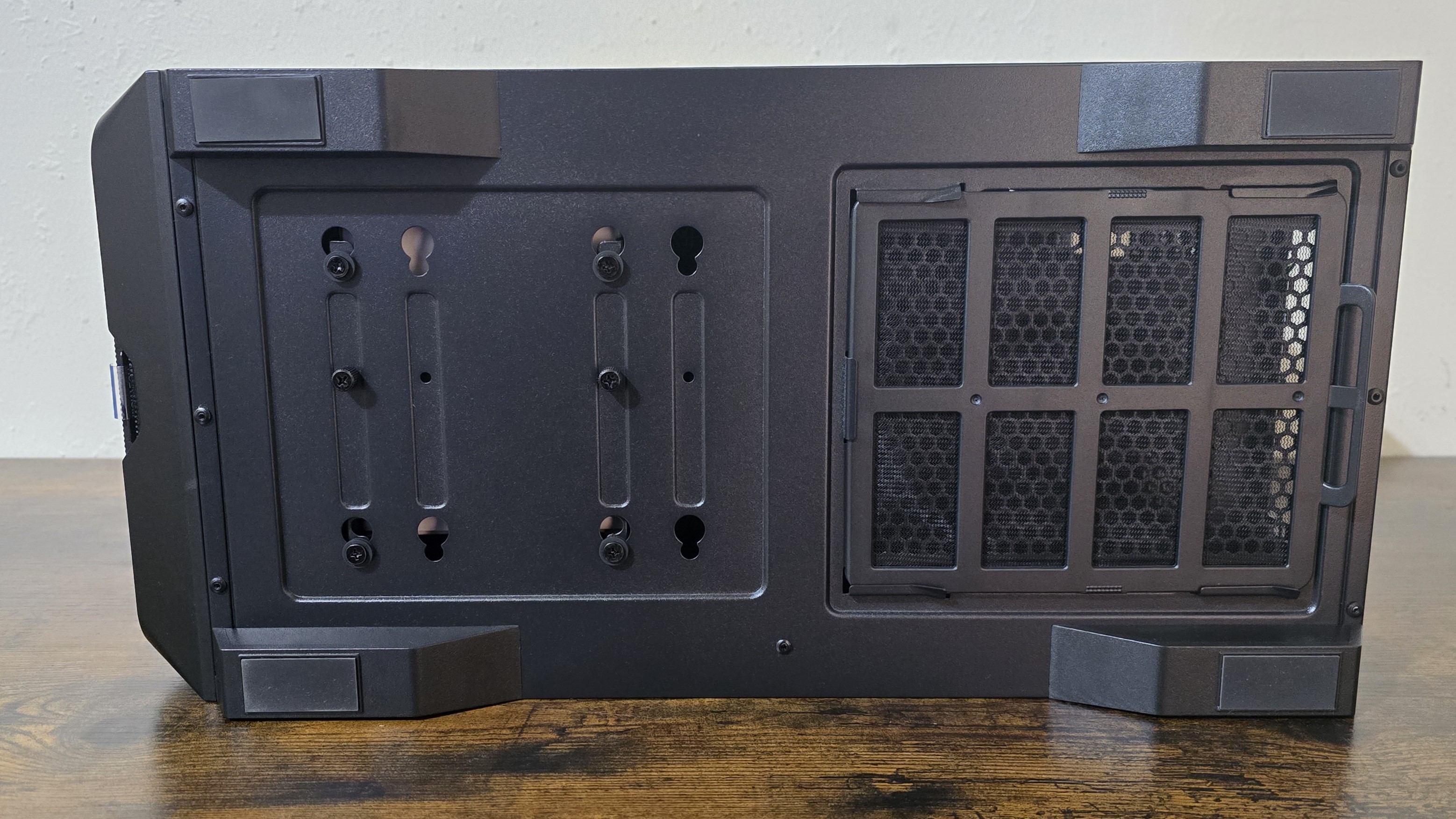
On the right side of the bottom is the PSU’s dust filter. On the left side you’ll see the securing ends for the 3.5-inch drive bay. On each of the four corners you’ll see the 2CM feet of the unit, with rubber to keep the case from sliding around on the floor or your desk.
*️⃣ Pre-installed 140mm ARGB fans
A computer case is more than just a box of metal (or plastic) that you install your components in – the included fans have a significant impact on component thermals and noise levels. Included with the Air 903 Max are three 140mm intake fans and one 140mm exhaust fan pre-installed in the case.
Montech lists the model of these fans as HP140 PWM, but unfortunately does not list their specifications, so I am unable to provide any more technical information about them. The three intake fans support ARGB lighting. The rear exhaust fan is solid black, without lighting.
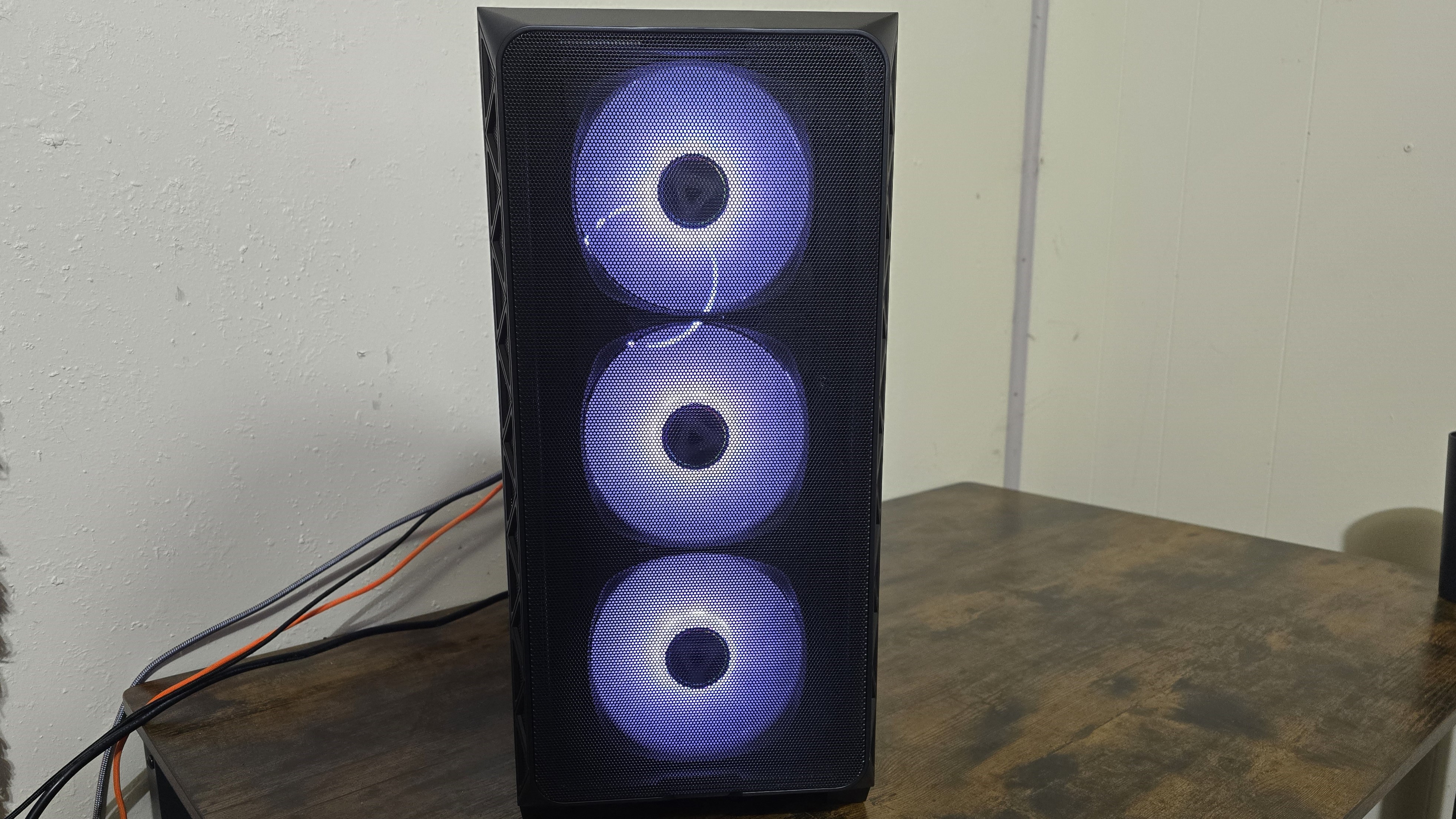
What I didn’t like about Montech’s Air 903 Max
❌ Standard (non-unified) F-Panel header
Montech’s Air 593 Max has a standard, non-unified, front-panel header. While this has been the standard for decades, I find them to be annoying. While I always remember where the power button connection goes, I sometimes have difficulty remembering the exact positions of the power LEDs and other connections. This isn’t a huge issue, but I think most modern cases should have unified front-panel connectors to make installation simpler.
❌ Oscillation at 40-49% PWM
When using the fans of the case in PWM mode, between 40% and 49% PWM, the noise levels oscillate, constantly going up and down. I experienced similar noise problems with Noctua’s NH-D15 G2 – though it was more severe with that product. This will bother some people more than others, but I found it quite noticeable.
Thermal Tests, Test Setup, and testing methodology
| CPU | Intel i9-14900K |
| CPU Cooler | Akasa Soho H4 Plus |
| Motherboard | ASUS Z790-P Prime Wifi |
| GPU | ASRock Steel Legend Radeon RX 7900 GRE |
These thermal tests are presented to give you more information about the product’s performance, but aren’t intended as the sole judgment of the chassis. The style, price, features, and noise levels of a computer case should also be considered – and each user has different preferences. What I might like in a case, you might not – and vice versa. That’s OK. My goal with these reviews is to give everyone, no matter their preferences, enough information to decide whether or not a product is right for them.
The measurements I’ve benchmarked this case against focus on:
- Maximum cooling performance on the CPU when fans are normalized to a moderately low noise level; the GPU is idle for this test. This primarily shows the efficiency of the fans included with a computer case.
- Maximum noise levels
- Maximum cooling and thermal performance in a worst-case-scenario test that fully stresses both the GPU and CPU. We’ll cover the temperature of the motherboard VRMs, CPU, and GPU in separate charts.
- Comparing CPU temperatures in a workload that is similar in power consumption to Far Cry V. This stresses both the CPU (approximately 150W) and GPU (275W).
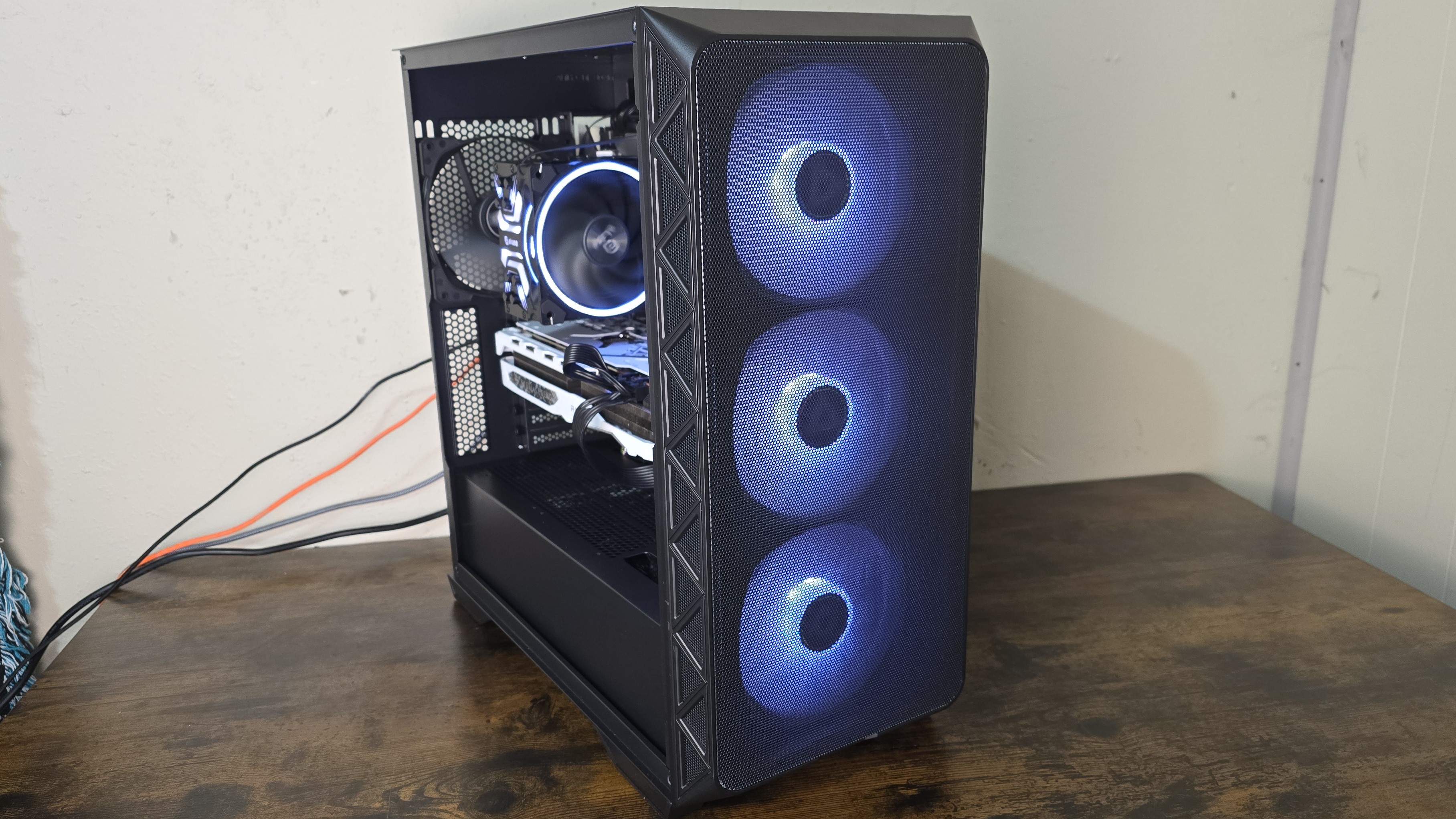
MORE: Best PC Cases
MORE: Best Mini-ITX Cases